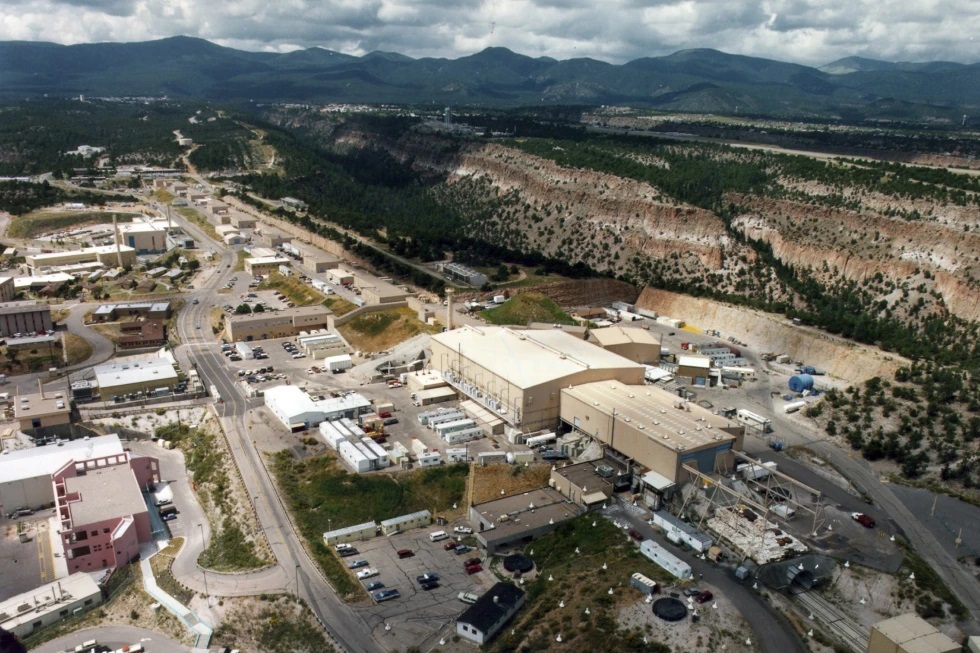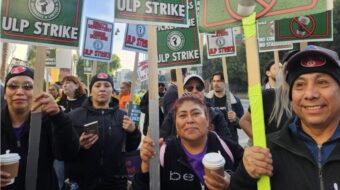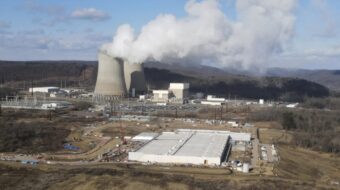
A three-years’-long quest by four public interest groups has taken a major step forward with a federal judge’s ruling that the government agencies responsible for U.S. nuclear weapons must thoroughly examine environmental consequences and potential alternatives for their plans to ramp up production of new plutonium pits, or bomb cores, for a new generation of nuclear weapons that includes the W87-1 warhead and the new Sentinel intercontinental ballistic missile it is to arm.
The plaintiff organizations – Savannah River Site Watch, Nuclear Watch New Mexico, and Tri-Valley Communities Against a Radioactive Environment (Tri-Valley CAREs), are longtime monitors of sites where nuclear weapons are developed. They were joined by a tribal group located near the Savannah River Site in South Carolina, the Gullah Geechee Sea Island Coalition.
In June 2021 they filed a lawsuit to compel the U.S. Department of Energy (DOE) and its semi-autonomous National Nuclear Security Administration (NNSA) to perform a thorough environmental review, as required under the National Environmental Policy Act (NEPA), of their plans to ramp up production of the new pits to 80 per year. Production is to be split between Los Alamos National Laboratory in New Mexico and – for the first time – the Savannah River Site in South Carolina. DOE and NNSA had been relying on earlier environmental reviews and failed to provide an analysis of feasible alternatives to this two-site plan.
Some experts argue that none of the new pits are needed for maintaining safety and reliability of the existing, extensively tested nuclear weapons stockpile. JASON, an Independent group of elite scientists that advises the United States government on matters of science and technology (mostly of a sensitive nature) found that existing plutonium pits, some 15,000 of which are currently stored, have a shelf-life of at least a century, and at present have an average age of 42 years.
Instead, the monitoring groups say, the new pits are for “speculative new-design nuclear weapons that can’t be tested because of an international testing moratorium, or alternatively could prompt the U.S. to resume full-scale testing, which would have serious proliferation consequences.” They add that expanded pit production will cost taxpayers more than $60 billion over the next 30 years.
While pits would be produced at the Savannah River Site and Los Alamos National Laboratory, support work is to take place across many states, including Lawrence Livermore National Lab in Livermore, Calif., Sandia National Lab in California and New Mexico, and the Waste Isolation Pilot Plant in Carlsbad, New Mexico, where environmental impacts were mostly left out of the public review process.
On Sept. 30, U.S. District Judge Mary Geiger Lewis issued a declaratory judgment finding that the federal agencies violated NEPA “by not conducting a proper alternatives analysis given the change in need and purpose and changed circumstances” since a 2008 environmental analysis.
Must now negotiate
Plaintiff groups and DOE/NNSA must now negotiate how the government shall comply with the order and the extent to which the public will be able to examine and submit formal comments on the new environmental review documents.
Attorney Ben Cunningham of the South Carolina Environmental Law Project, which represents the plaintiffs, called Judge Lewis’ ruling “a significant victory that will ensure NEPA’s goal of public participation is satisfied.” He said public scrutiny is “especially important because the issues here, by their very nature, result in the production of dangerous weapons and extensive amounts of toxic and radioactive waste,” and added that he hopes the public “will seize the upcoming opportunity to review and comment on the federal agencies’ assessment.”
Tom Clements, director of Savannah River Site Watch, called the ruling “a notable victory” for the lawsuit’s main argument “that NNSA’s environmental analysis on plutonium pit production was inadequate, and now a Programmatic Environmental Impact Statement (PEIS) must be prepared that reviews DOE-wide impacts of plutonium pit production and associated radioactive waste disposal.” Clements called for putting design and construction work for the proposed Savannah River Site pit plant on hold until the PEIS has been finalized.
Jay Coghlan, executive director of Nuclear Watch New Mexico, said DOE and NNSA have been on the Government Accountability Office’s “High Risk List” for mismanagement and cost overruns for more than 30 years. “Nevertheless, these agencies think they can proceed with their most expensive and complex project ever without required public analyses and credible cost estimates.” Coghlan said a nationwide PEIS on expanded plutonium pit production will hold the agencies accountable to improve public safety and save taxpayers’ money.
“Tenk GAWD fa disya!” said Queen Quet, chieftess of the Gullah Geechee Nation. She said native Gullah/Geechees “rely on safe and healthy water in order to sustain ourselves and our community. Therefore, it is critical that the public is fully aware of any and all potential negative impacts that projects will have on critical resources such as our water supplies and water bodies. So, we are thankful that the judge ruled in our favor so that NEPA is adhered to … The Gullah/Geechee family is definitely smiling as a result of this ruling!”
In an interview, Scott Yundt, executive director of Tri-Valley CAREs, said that during public comment periods on plans to build new bomb pits at both Los Alamos National Lab and Savannah River Site, commenters repeatedly stressed that DOE and NNSA “violated the law by failing to take a hard look at alternatives for this ‘two-site’ plan.”
Yundt said commenters also pointed out that other affected sites were left out of the environmental review, “chief among them Lawrence Livermore National Laboratory and the Waste Isolation Pilot Plant where the scope of work and the corresponding impacts were largely left out of the analysis and again, no alternatives were offered or analyzed as required by NEPA.
“Public hearings should occur at least in the directly affected places, and also in Washington, DC,” Yundt said. These should be “accompanied by a full written public comment period where anyone in the country can submit comments, and a virtual public hearing that allows people to be briefed no matter where they are in the country because all people living in states housing silos for W87-1 warheads and Sentinel missiles should be able to participate.”
He said the organizations hope the environmental review process will be “timely, and not rushed or done in a way that doesn’t add value.” The “hard look” at alternatives that NEPA requires “could and should identify other possibilities for developing plutonium pits to meet stockpile needs in ways that put communities near sites at less risk, minimize transportation of nuclear material around the country, and are more cost-effective and less proliferation-provocative.”
Yundt said the organizations will mobilize public comment “throughout nationwide networks of peace, environmental and justice organizations concerned about nuclear weapons modernization, the development of new plutonium pits, the Sentinel ICBM program, and the geopolitical and domestic cost overrun problems that the Sentinel program creates.”
He continued, “The judge saw these violations clearly and ordered agencies to do the analysis that should have been done at the outset.”
Calling the ruling “a victory for public transparency,” Yundt said in coming weeks the four monitoring organizations and representatives of DOE and NNSA will meet to confer on a possible agreed-upon remedy.
We hope you appreciated this article. At People’s World, we believe news and information should be free and accessible to all, but we need your help. Our journalism is free of corporate influence and paywalls because we are totally reader-supported. Only you, our readers and supporters, make this possible. If you enjoy reading People’s World and the stories we bring you, please support our work by donating or becoming a monthly sustainer today. Thank you!









